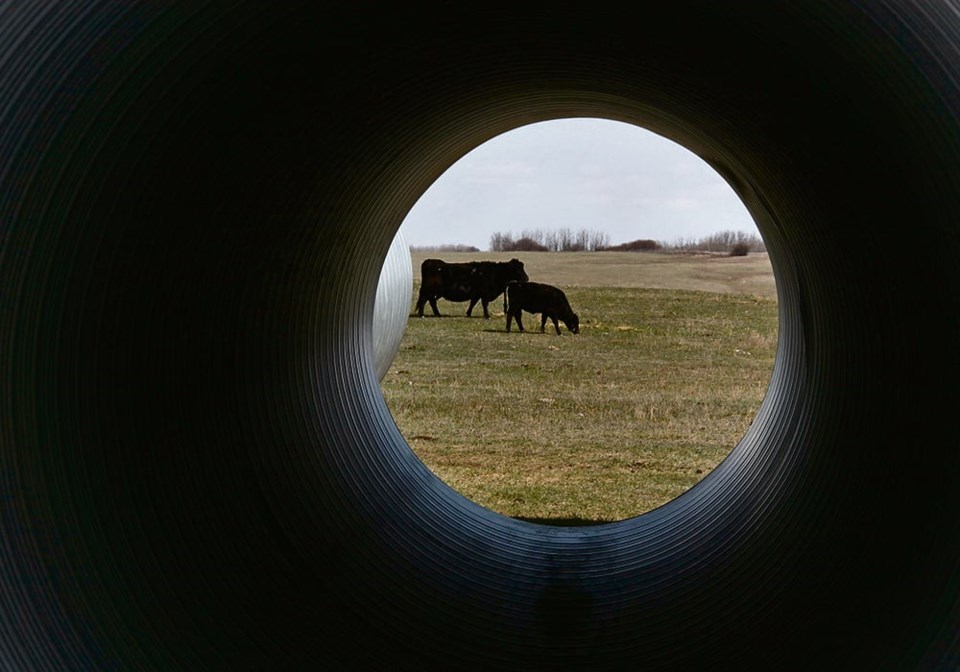WESTERN PRODUCER — A final agreement at the United Nations’ Biodiversity Conference held in Montreal recently came during the early morning hours of the last day of the meeting with its landmark arrangement of protecting 30 percent of the planet’s ecosystems by 2030.
By adopting the non-binding agreement formally known as the , the international community has agreed to support sustainability through conservation of natural areas.
Larry Thomas, environment and sustainability manager with the Canadian Cattle Association, said at the conference better known as COP15, which was held Dec. 7-19, the beef industry stressed the importance of ranching in achieving the goals of protecting native prairie
“Right now, I would say it’s not bad for the beef business,” said Thomas. “It was pretty positive on agriculture in general and Canadian negotiators did take to heart some of the concerns we had and, ultimately, others had globally, with some of the wording.”
Thomas said the agreement is more aspirational and does not come as a legally binding document.
“It’s up to (countries’) own capacity as to what they do,” he said, explaining that will allow for more co-operation between the government and industry.
Concerns such as language requiring mandatory requirements, legal responsibilities and punitive measures was headed off before the final agreement was reached, said Thomas.
“Some of the lobbyists I think were going after the big trans-nationals. We know a lot of our producers are family businesses. So, we were concerned that going down that way could be burdensome for our producers.”
While the goal of protecting 30 percent of prairie ecosystems is in line with the ranching industry’s goal of maintaining native grasslands for grazing, the details of how that’s done has the CCA closely watching implementation of the agreement.
“Trying to tell producers how to manage their operations, that’s where it gets a little bit spooky,” said Thomas.
One of the counters to the situation that’s contained in the GBF is the “other effective conservation methods” (OECM) clause of the agreement, which considers such things as easements and not just protected areas.
“We’re OK with it in the context that we’re already doing the right things and we think that through these OECMs that would be recognized globally,” said Thomas.
Peter Soroye, outreach co-ordinator with Wildlife Conservation Society Canada, said his organization was pitching its Key Biodiversity Areas (KBA) concept at COP15.
KBAs are becoming an international benchmark in identifying areas of marine and terrestrial importance to conserving biodiversity.
“For us, the COP meeting was a great opportunity to talk about KBAs on a global stage on what we’re doing here in Canada,” said Soroye. “Canada is really leading the charge on KBAs so it was really exciting to present about the work that we are doing.”
One of the important aspects to KBAs is the standardization of defining ecosystems in need of recognition to maintain or improve biodiversity.
“They synthesize a lot of previous approaches. Before we used to have important bird biodiversity areas, prime butterfly areas — there were dozens of different ways to identify important places for biodiversity,” he said. “KBAs synthesize and combine those into a single tool.”
Current KBAs on the Prairies range from Whitewater Lake in Manitoba, Reed Lake in Saskatchewan and Frank Lake in Alberta.
KBAs failed to make it into the final agreement at COP15, but Soroye said they will be used as part of Canada’s evaluation in reaching the goal of protecting 30 percent of biodiversity by 2030.
He stressed KBAs aren’t about putting restrictions on the agricultural sector but ensuring those areas are properly identified.
“One of the beauties about KBAs is that they are just information. There is no automatic protection that comes in, there is no management prescriptions that come with KBAs,” he said.
Thomas said he’s optimistic with the goals of the beef industry and conservationists overlapping with the goals contained in the GBF.
“The proof of whether it’s going to be good for us is how they move,” said Thomas. “The importance for keeping those cattle on the land, keeping these families able to make a good living off of that land, increasing the ability of them to earn revenue off of the habitat work and grassland work that they do and the water they protect.”
In addition to the 30 precent protection by 2030, the GBF includes 23 other targets, such as halving global food waste, phasing out subsidies that harm biodiversity, mobilizing $200 billion per year to fund biodiversity measures and helping to fund efforts in developing countries.




